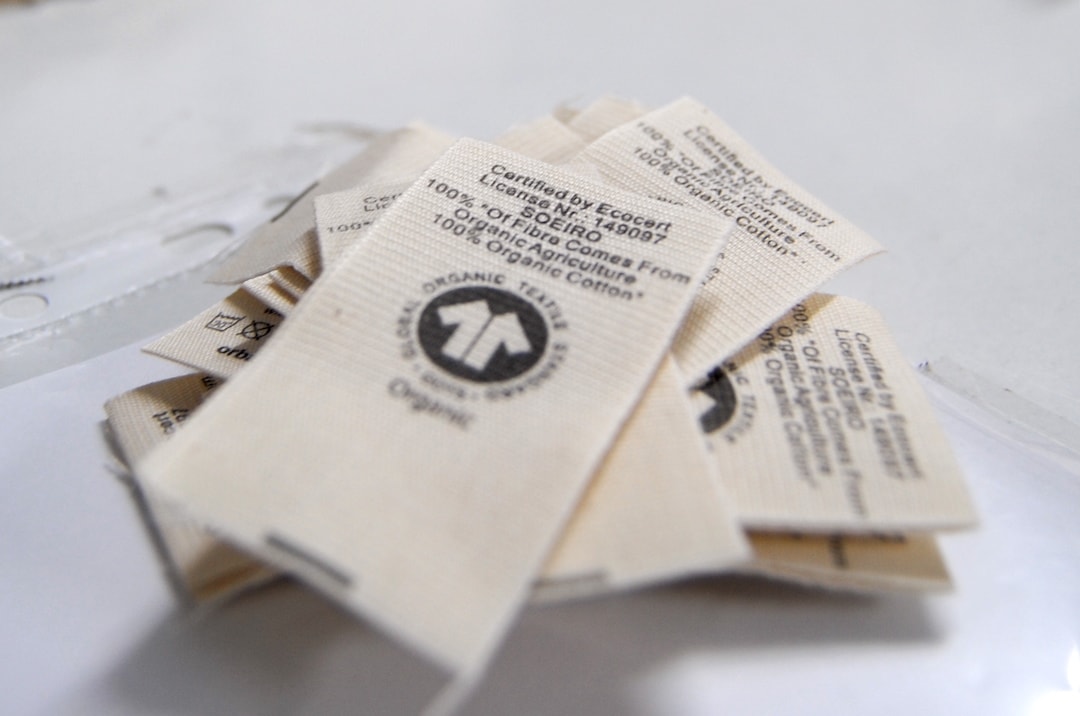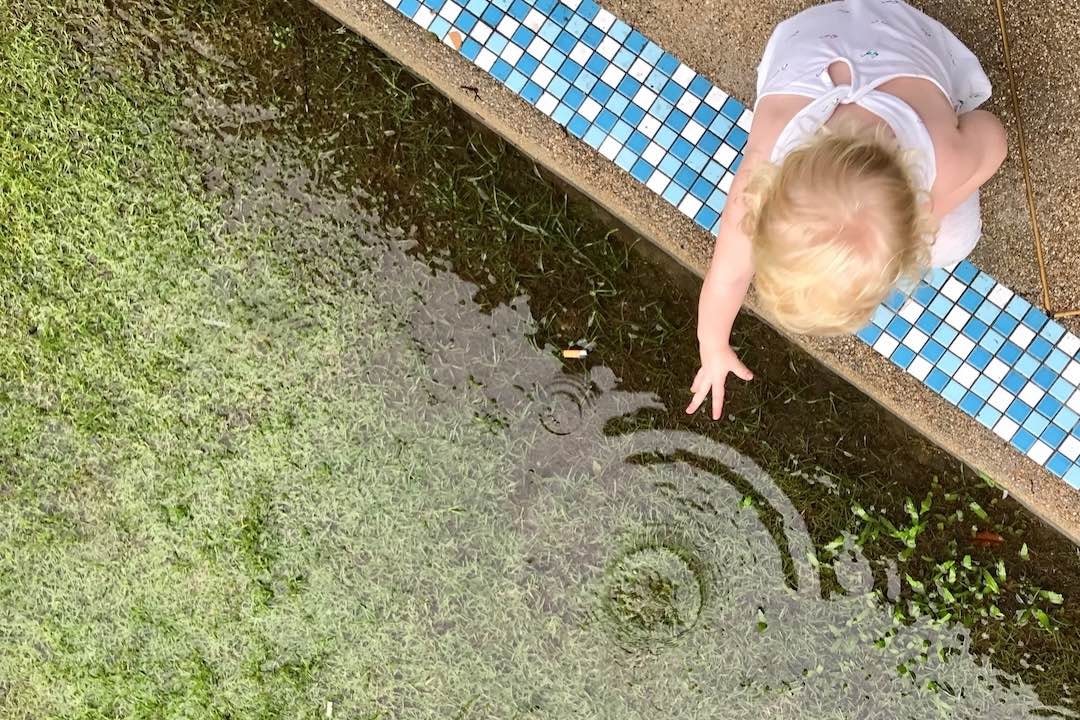Table of Contents
Sustainable Living: Your Guide to a Greener Life
This page may contain affiliate links. We may earn a commission on purchases, at no additional cost to you. Learn more →
If you're motivated to reduce your impact on our planet, learning what it means to live sustainably is the first step in the right direction. With the rise of social media and the increasing availability of eco-friendly products, sustainable living has become more popular than ever.
Yet, sustainable lifestyle is a broad term. While we often see influencers sharing their aesthetically pleasing zero-waste lives, sustainable living can actually look different for everyone.
When I first heard about sustainable living, I thought I needed to buy all the trendy 'zero waste' products and drastically change my lifestyle. But it doesn't have to be that way. That mindset can, in fact, hold you back from starting a sustainable lifestyle or make the journey more challenging.
That's why we've created this comprehensive guide to help you understand what sustainable living is and how you can easily live sustainably without feeling frustrated. So, let's get started!

Sustainable Living 101 - What You Need to Know
What is Sustainable Living?
Sustainable living is all about reducing the impact of our lifestyle choices on the environment and being socially responsible. In other words, living sustainably is not just about the environment but also about fairness and a better life for all. This can include reducing the use of Earth's natural resources, choosing products made under fair conditions, cutting down on plastic waste, reducing your carbon footprint, minimizing food waste, etc.
Now I know what sustainable living means I take a more holistic approach to my life, I prioritize the environment, my health, and others. But to stay motivated in the long run and never lose focus it’s also important to know why these sustainable lifestyle choices matter to you, society, and the planet as a whole.
What are the three pillars of sustainable living?
Sustainable living has three main pillars, often referred to as the “triple bottom line” or the “3 Ps”: People, Planet, and Profit. Getting these pillars right is key to a truly sustainable life and society.
1. People (Social Equity)
The “People” pillar is about social equity and fair treatment for all. This means:
-
Fair work practices and conditions
-
Education and healthcare
-
Community development and support
-
Cultural preservation and diversity
-
Human rights and social justice
In reality this might mean supporting businesses with ethical labour practices, volunteering in your community or advocating for policies that promote social equity.
2. Planet (Environmental Protection)
The “Planet” pillar is about protecting and preserving our natural world. This means:
-
Reducing carbon emissions and climate change
-
Conserving natural resources and biodiversity
-
Minimising pollution and waste
-
Protecting ecosystems and wildlife habitats
-
Promoting renewable energy and sustainable agriculture
Implementing this pillar might mean eating a plant based diet, using renewable energy or getting involved in local conservation efforts.
3. Profit (Economic Viability)
The “Profit” pillar acknowledges the need for economic sustainability. It’s about making sustainable practices economically viable in the long term. This means:
-
Creating sustainable business models
-
Promoting circular economy principles
-
Investing in green technologies and innovations
-
Balancing economic growth with environmental and social responsibility
-
Encouraging responsible consumption and production
On an individual level this might mean supporting sustainable businesses, investing in ethical funds or choosing products with a lower environmental impact even if they cost a bit more.
The Three Pillars in Balance
The secret to sustainable living is to balance these three pillars. Every decision we make - from the products we buy to the policies we support - should ideally consider all three:
-
Is it socially equitable? (People)
-
Is it environmentally friendly? (Planet)
-
Is it economically viable? (Profit)
It’s not about being perfect, just making choices that balance these three pillars as best we can. Every little helps.

Why is Living Sustainably Important?
Living sustainably allows us to be a force for good and improve our quality of life. Besides making us feel good about our lifestyle choices, living sustainably has many benefits for our health, our finances, our planet and everyone who lives on it. By reducing the environmental impact of our actions and supporting fair practices we help create a better world for all living things and future generations.
Let’s see the environmental, economic and social benefits of living sustainably:
-
Environmental protection: Sustainable practices help you protect ecosystems, preserve natural resources, promote biodiversity, fight climate change, prevent pollution, reduce waste and more.
-
Healthy habits: Living sustainably can help you make healthier food choices, reduce your exposure to toxic chemicals, get more physical activity with eco-friendly transport options, feel more purpose and fulfilled.
-
Reduced expenses: Sustainability is also a smart financial move. Sustainable practices can lower your utility bills, save you money in the long run and cut costs on disposable items, fuel and overall consumption.
-
Social connections: A sustainable lifestyle can also help you meet like-minded people, share similar experiences and build meaningful relationships.
-
Fair labor standards: Choosing products made fairly means a system where workers are paid fairly, work in safe conditions and are treated with respect.
-
Future security: The choices we make today will pave the way for a sustainable future so that future generations have access to the same resources we do today.
Now that you know what sustainable living is and why it's important, it's time to show you a cheat sheet that will make making sustainably-minded decisions a breeze!

What are the 7 Rs of sustainable living?
The 7 Rs of sustainable living are a set of principles that are essential for a more sustainable lifestyle:
-
Refuse: Avoid buying or acquiring unnecessary items that will go to waste.
-
Rethink: Reflect on your choices and look for more sustainable alternatives.
-
Reduce: Cut down on your consumption of new stuff, especially disposable items.
-
Reuse: Find creative ways to use items multiple times before discarding them.
-
Repair: Fix broken or damaged items instead of throwing them away.
-
Recycle: Collect your recyclables and take them to the nearest recycling facility.
-
Rot (Compost): Turn organic waste into nutrient-rich soil for your garden.
If this list feels like too much info, you can stick to the basic 3 Rs: reduce, reuse, and recycle. Once you've started to implement these basic rules, the rest will be easier to remember!
We know that learning how to live sustainably can be overwhelming at first, so we want to make it easier and more enjoyable for you. That's why we've compiled simple yet impactful tips that will level up your sustainability game from zero to eco-warrior!
Sustainable Living Tips You Can Implement Today
Every decision we make has an indirect impact—positive or negative—on the environment and society. To live a more sustainable lifestyle, we have to reflect on our lifestyle choices so we can boost our positive impact and cut down on the negative. Small changes in our everyday life—like how we move, the food we eat, the amount of water we use, the products we choose to buy, and even the candidates we support—can have a significant impact.
Looking to live a more sustainable lifestyle? Try starting with these easy changes:
Sustainable Consumption
Changing our consumption patterns is probably the most challenging part of starting a sustainable lifestyle. And it becomes even harder when our economic system keeps promoting consumerism. We're constantly encouraged to buy the latest products, but this habit is highly detrimental to the environment. And let's be honest, we don’t need much to be happy.

Here are a few simple ways to be a conscious consumer:
Promoting Conscious Consumption
-
Adopt a minimalist approach: Before buying something ask yourself: Do I need this? How often will I use it? Can I borrow it from a friend? Don’t let emotions get the better of you, take a few days to think about it. Remember emotions can trigger impulse buying so giving yourself time helps you make more thoughtful decisions.
-
Opt for durable products: Investing in high quality, durable items will pay off in the long run. Products designed to last and can be repaired will reduce the need for replacements and help you reduce waste and save money.
-
Support small, sustainable businesses: Large corporations often have a bigger impact on the environment and their workers. That’s why it’s so important to support businesses that actually invest in sustainability and avoid those that don’t. Believe it or not this puts more pressure on big corporations and forces them to do better.
-
Avoid single-use products: Replacing disposable products like plastic water bottles, plastic bags and paper towels with reusable alternatives like reusable bags, beeswax wraps and a reusable water bottle is an easy way to live sustainably.
We need to be mindful of our consumption habits to preserve resources. And we need to be especially careful about buying new clothes. Luckily there’s ways to support sustainable fashion:

Supporting Sustainable Fashion and Slow Fashion
-
Avoid Fast Fashion: Fast fashion is responsible for about 10% of global carbon emissions. If you want to reduce your contribution to climate change, you should avoid trendy clothing that's designed for short-term use. Want to learn how to have a climate-friendly wardrobe? Check our guide slow fashion!
-
Choose natural and organic materials: One of the things I hate about fast fashion is its disproportionate use of synthetic materials, such as polyester and nylon. When buying new wardrobe staples, look for clothes made of sustainable materials and natural fibers, like organic cotton and wool.
-
Look for certifications: An easy way to identify sustainable fashion brands is to look for trustworthy third-party certifications, such as B Corp, GOTS, Fairtrade, Oeko-tex, and FSC.
-
Care for your clothes properly: Textile waste is a huge environmental problem, so taking good care of your clothes is a must-do in your sustainable lifestyle. You can extend the lifespan of your clothes by washing them less frequently, using cold water, and learning how to mend clothes.
Just as our clothing choices can impact the environment, so can the food we eat. Understanding the implications of our food choices is another important step toward a more sustainable lifestyle.

Sustainable Food Systems
Our food choices are a crucial part of our sustainable lifestyle.
There's something we usually take for granted: all the resources used to produce the food we eat. Producing the foods we love requires a lot of water and many of these foods leave behind a significant carbon footprint, contributing to climate change.
When we let food go to waste, we're also wasting the energy, water, and other valuable resources that went into its production and transportation. Suppose that's not bad enough, when our food ends up in landfills. In that case, it generates potent greenhouse gas emissions—specifically methane, a greenhouse gas 80 times more harmful to our climate than carbon dioxide!
Learn how to reduce the impact of your food:
Reducing Food Waste and Promoting Sustainable Food Choices
-
Choose organic produce: As you might know, organic farming methods are kinder to the environment. When possible, prefer organic produce and locally sourced, seasonal foods to support your local economy, reduce greenhouse gas emissions, and promote healthy ecosystems.
-
Reduce meat consumption: Meat is a major source of pollution. Eating less meat, especially red meat is a simple way to help the planet. If like me you can’t give up meat altogether, you can cut back on a few servings a week. Also instead of buying meat from big corporations, buy from small, local, and organic farmers. By knowing where your meat comes from and supporting sustainable farming practices you promote healthier ecosystems and animal welfare. Try visiting your local farmers market or joining a community-supported agriculture (CSA) program. It’s a great way to connect with farmers and ensure you’re getting ethically sourced products that you can feel good about. By making these choices you can be part of a more sustainable food system and still eat meat in moderation.
-
Plan meals: Before heading to grocery stores, plan your meals, check what you already have at home, and make a grocery list. This is a smart way to ensure you buy only what you'll use and reduce food waste.
-
Compost food scraps: Have some food scraps? Use a compost bin to reduce food waste and get nutrient-rich soil for your plants.

As kids, we were often reminded not to waste food. While it might have seemed repetitive at the time, it was pretty good advice. Another tip we might not have appreciated then was the need to conserve water and save energy at home. These two simple actions can make your home more sustainable while making a positive difference in both your wallet and the environment.
Sustainable Home
What does it mean to be sustainable at home?
There are many ways to be sustainable at home. Some people grow their sustainable gardens to get fresh, local produce. Others create non-toxic cleaners from natural ingredients to avoid harmful chemicals. Some even choose sustainable materials like bamboo or reclaimed wood to build their homes. But there are two non-negotiable actions you can start doing today to live sustainably at home: reducing your energy consumption and conserving water.
We often think we've done all we can to save energy, but there are still a few simple, effective habits that many people haven't tried yet:
Energy Efficiency
-
Use LED light bulbs: Switching to energy-saving light bulbs is a simple way to save money and lower your energy use, as they consume less power and last longer than traditional bulbs. And yes, LED bulbs are great and all, but don't forget to turn off your lights when you leave the room!
-
Unplug electronics when not in use: I know it's convenient to leave some electronics plugged in and ready to use. I've been guilty of this too. But then I discovered that some devices and appliances, often called 'energy vampires,' can continue draining power even when switched off. So, remember to unplug them when not in use to reduce energy costs!
-
Use energy-efficient appliances: When your old appliances need replacement, look for energy-efficient alternatives. Modern energy-efficient appliances not only will cut down on your energy usage but will also save you money in the long run.
-
Use natural light: Taking advantage of the beautiful natural light the sun provides each day is the best way to conserve energy at home and boost your mood!
-
Use renewable energy sources: If your budget and climate allow, you could install solar panels on your rooftop to generate green electricity and reduce your dependence on fossil fuels. We know this may not be possible for most of us right now, so another option is to switch to an energy provider that offers green energy from renewable energy sources like solar panels or wind turbines.
Now that we've learned how to make our houses more energy-efficient, let’s turn our attention to another simple yet effective way to be more eco-friendly at home: conserving water.

Water Conservation
-
Take short showers: Include shorter showers on your checklist for a more sustainable lifestyle. I know we all love long, relaxing showers, but that doesn't mean we should take long showers every day. Here's what I do: I keep my showers short by listening to two of my favorite songs. I promise this tip will help you lift your mood, get ready in under six minutes, and conserve water!
-
Turn off the tap: Every time you wash your dishes, brush your teeth or shave, make sure to turn off the tap to save water.
-
Install water-efficient fixtures: Another way to reduce your water usage is to install low-flow showerheads, dual-flush toilets, and faucet aerators. These upgrades will help you use less water without affecting your daily activities.
-
Use appliances efficiently: Pay special attention to your dishwasher and washing machine, as these can waste a lot of water and energy. The most effective way to use them is to run only full loads, which helps you conserve both water and energy.
While a sustainable home is important, our environmental impact goes beyond our walls. How we travel and get around can make a big difference. Let’s look into how we can live more sustainably!

Sustainable Transportation
We can’t ignore the environmental impact of our choices. We’d all love to move around on renewable energy. Unfortunately, that’s not the case yet. Most of our transportation options are still on gasoline, diesel or natural gas, all of which emit carbon. And we know how those greenhouse gases affect our planet.
Try these simple tips to make your mobility more sustainable:
Eco-Friendly Transportation Options
-
Walk or bike when possible: Heading somewhere nearby? Leave your car at home and walk or bike instead. Enjoy the health benefits, get some fresh air and help a healthier planet all at once.
-
Use public transport: If your area has reliable public transport options, use them occasionally to save on gas, skip the stress of driving and help a greener planet.
-
Give carpooling or ride-sharing services a try: There are so many cars on the road with just one person inside. And many of them are going to the same place. By carpooling you not only take one car off the road but also reduce greenhouse gas emissions.
-
Fly less: Want to be a sustainable tourist? Take the train instead of flying when possible and look for eco-friendly hotels. If you can't skip flying, consider offsetting your carbon emissions.
You made it! Now you know how to shop, eat and move sustainably and create a more eco-friendly home!
But don’t forget you don’t live alone in this world. If we really want to have a more sustainable future, we must all be part of the solution. And that means we must encourage people, companies and governments to be more sustainable.

Collective Action and Corporate Responsibility
Even though our individual actions are important, they must be part of a broader strategy that includes educating others and holding corporations accountable for their environmental impact.
Our actions do affect the environment, but the biggest environmental impacts come from large corporations. In fact, more than 70% of global greenhouse gas emissions have been produced by just 100 companies since 1988. And yet, the responsibility is disproportionately placed on individuals.
"Reduce your carbon footprint" is a phrase we often hear.
But wouldn't it be great if these major corporations did the same? To make a real difference, we need to advocate for systemic change. So, let's see how we can promote collective action and ensure companies are held responsible for their actions:
Advocating for Change and Educating Others
-
Vote with your wallet: As a consumer you have a voice. Make sure to support companies that are transparent about their practices and avoid those that put profit over the planet and their workers.
-
Demand Accountability: Get companies to be more responsible and sustainable. Reach out to them on social media, email or public forums and ask about their environmental impact and policies.
-
Educate others: Share your knowledge with family and friends to promote sustainable lifestyles. If more people are aware of the issue, we can join forces to reduce our environmental impact, hold unethical companies accountable, and demand change.
-
Promote Legislation: Support politicians who put the environment first and advocate for laws that make companies adhere to strict sustainability standards.
Final Thoughts
Living sustainably is easier said than done, but that doesn't mean it is impossible.
We often overwhelm ourselves trying to implement all the sustainable living tips we learn at once. However, the best approach is to choose a few simple actions you can easily incorporate into your everyday life and go from there. You don't need to be perfect to live a more sustainable lifestyle.
There isn't a standardized path to sustainable living. We can all make a difference with our actions, whether it's reducing waste, conserving natural resources, saving energy, or boycotting unethical companies.
Together, our collective efforts and pressure on companies can drive meaningful change, making sustainability the norm. It's all about putting a few tips into practice, discovering what works best for you, continuing to learn about sustainability, improving along the way, educating others, and advocating for systemic change!
FAQs
What is meant by sustainable living?
Sustainable living means reducing your own or society’s use of natural resources and personal resources. It’s about making conscious choices to minimize your impact on the environment by reducing waste, conserving energy and choosing sustainable products. It’s about finding a balance between meeting current needs and preserving the planet for future generations
What is a sustainable lifestyle?
A sustainable lifestyle is a way of living that puts ecological balance and social responsibility first. It’s about habits and choices that contribute to conservation of the environment like using renewable energy, reducing waste and ethical consumerism. This lifestyle is derived from the broader concept of sustainable development which means meeting the needs of the present without compromising the ability of future generations to meet their own needs.
What does living in a sustainable way mean?
Living sustainably means making daily choices that benefit the planet and society. This means using less energy, reducing waste through recycling and composting and choosing products that are eco friendly. It also means supporting local economies and being aware of the social impact of your actions so we can live in harmony with nature.
What does sustainable living look like?
Sustainable living can look like living in energy efficient homes, using public transport or cycling instead of driving, eating locally sourced organic food and participating in community initiatives that promote sustainability. It means integrating eco friendly practices into daily life to reduce environmental impact and improve personal and community health.
Can sustainable living be a realistic goal?
Yes, sustainable living can be achievable when individuals and communities make incremental changes towards more sustainable practices. There are challenges like economic constraints and societal habits but many examples show that adopting sustainable practices can lead to positive environmental and social outcomes. By focusing on achievable goals and community support sustainable living becomes more accessible and doable.













